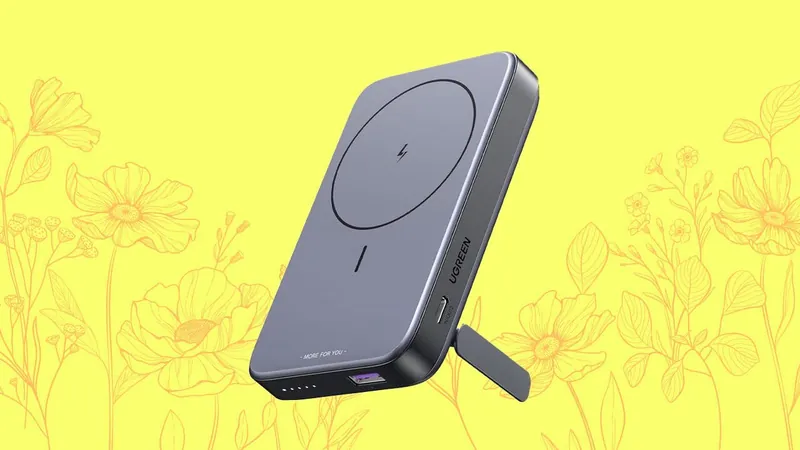
Breakthrough Study Unveils Key Genes That Could Revolutionize Hearing and Vision Restoration!
2025-04-01
Author: Nur
Groundbreaking Study from USC Stem Cell Lab
A groundbreaking study from the USC Stem Cell lab, led by Dr. Ksenia Gnedeva, has identified crucial genes that may unlock the secrets of cellular regeneration in the ear and eye. Published in the prestigious Proceedings of the National Academy of Sciences (PNAS), this research could change the lives of millions suffering from hearing and vision loss.
Significance of Regenerative Mechanisms
Dr. Gnedeva, an assistant professor in the USC Tina and Rick Caruso Department of Otolaryngology − Head and Neck Surgery, emphasized the significance of understanding the mechanisms that inhibit cell regeneration. "The proliferation of progenitor cells in response to injury is vital for regenerating sensory receptors. However, this regenerative process is obstructed in the mammalian inner ear and retina. By exploring the genes that maintain this block, we can catalyze efforts to restore hearing and vision in patients," Dr. Gnedeva explained.
Focus on the Hippo Pathway
The research focused on the Hippo pathway, a group of interacting genes that critically serves as a “stop growing” signal. This pathway has previously been shown to limit cell proliferation during embryonic development in the ear. The study's authors, Eva Jahanshir and Juan Llamas, discovered that the Hippo pathway also restrains the regeneration of damaged sensory receptors in both the ear and the eye of adult mice.
Innovative Approaches and Findings
In an innovative approach, the scientists employed an experimental compound that inhibits Lats1/2—key proteins within the Hippo pathway. When they applied this compound in laboratory conditions, they noted substantial proliferation of supporting cells in the utricle, a sensory organ essential for balance in the inner ear. However, the organ of Corti, responsible for hearing, showed a lack of response, which led to a deeper investigation into the underlying causes.
Further analysis revealed that a protein named p27Kip1 was a major roadblock to regeneration in the organ of Corti, as its levels were found to be elevated in the retina as well. In an impressive experiment, the researchers created a transgenic mouse model in which the levels of p27Kip1 could be reduced. This manipulation showed promising results; supporting cells in the organ of Corti demonstrated pronounced proliferation—which is essential for the regeneration of auditory sensory cells.
Remarkable Results in Retina
What’s more surprising is that in the retina, inhibiting the Hippo pathway not only spurred the proliferation of Müller glia progenitor cells but also led these cells to spontaneously differentiate into sensory photoreceptors and other critical neuronal cell types. Dr. Gnedeva remarked, “Reports show that p27Kip1 levels decrease after injury, suggesting a narrow window of opportunity to apply our compound to promote regeneration in both the ear and the eye.”
Future Implications and Drug Development
This revolutionary study heralds potential new avenues for drug development aimed at either inhibiting the Hippo pathway or directly lowering p27Kip1 levels, offering hope for therapies that might one day successfully reverse sensory deficits in humans. Researchers will be eager to see these findings applied in clinical settings, paving the way for a brighter future in the restoration of hearing and vision.
Stay Tuned for Updates
Stay tuned for more updates on this exciting research that could reshape the landscape of regenerative medicine!





 Brasil (PT)
Brasil (PT)
 Canada (EN)
Canada (EN)
 Chile (ES)
Chile (ES)
 Česko (CS)
Česko (CS)
 대한민국 (KO)
대한민국 (KO)
 España (ES)
España (ES)
 France (FR)
France (FR)
 Hong Kong (EN)
Hong Kong (EN)
 Italia (IT)
Italia (IT)
 日本 (JA)
日本 (JA)
 Magyarország (HU)
Magyarország (HU)
 Norge (NO)
Norge (NO)
 Polska (PL)
Polska (PL)
 Schweiz (DE)
Schweiz (DE)
 Singapore (EN)
Singapore (EN)
 Sverige (SV)
Sverige (SV)
 Suomi (FI)
Suomi (FI)
 Türkiye (TR)
Türkiye (TR)
 الإمارات العربية المتحدة (AR)
الإمارات العربية المتحدة (AR)